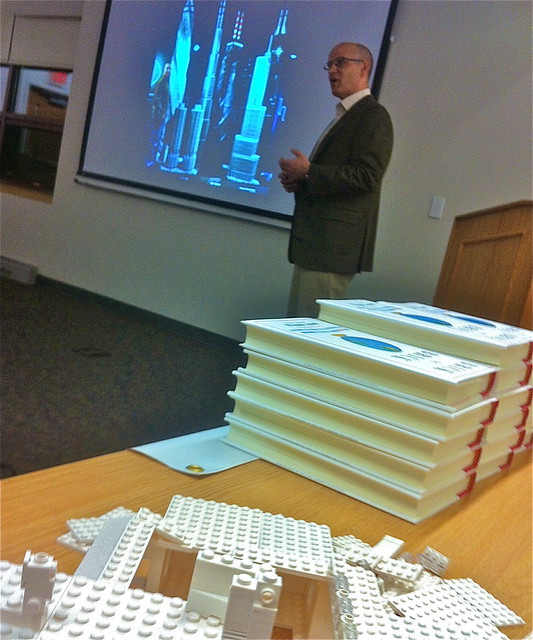The Lego Company has been fantastically successful. In each of the last 5 years sales have risen 24% and profits, 40%. But it was not always so. For most of its 80-year existence, its reach did not extend so far beyond Billun, Denmark, where Ole Kirk Christiansen, a carpenter unable to secure enough wood to build furniture during the 1930s depression, began experimenting building wooden toys.
The company under Christiansen’s progeny soared in the last couple decades but tie-in products to the Star Wars and Harry Potter movies nearly doomed the company in 2003; sales of those products crashed when the movie franchises hadn’t yet come out with new films.
This, according to Wharton Professor Dave Robertson and former LEGO Professor of Innovation and Technology Management at Switzerland's Institute for Management. Robertson, a Chestnut Hill resident, discussed his new book, “Brick by Brick: How LEGO Rewrote the Rules of Innovation and Conquered the Global Toy Industry” at the William Jeannes Library in Lafayette Hill this past Thursday evening.
He began his slide talk by distributing baggies, each packed with the identical same six logo pieces, and instructed the audience to “Build a duck” and gave us only a minute or two. Participants then brought their “ducks” up to the front table. At the end of the talk, Robertson pointed to the wide variation of these Lego “ducks” as evidence that incredible creativity is possible even when severe constraints are imposed, a major thesis of his book.
He credits Lego Company’s resurgence to its imposition of key constraints: drastically reducing the number of parts (about 14000 different ones at peak) that had made the manufacturing process unwieldy, getting back to products that are more “Lego-y” and subjecting product proposals to the approval a committee of 3 seasoned Lego designers. And, ultimately, insisting that projected profitability be a constant constraint.
What Lego pioneered was not just a toy, Robertson maintains, but a system of play. And that system “is about the brick.”
